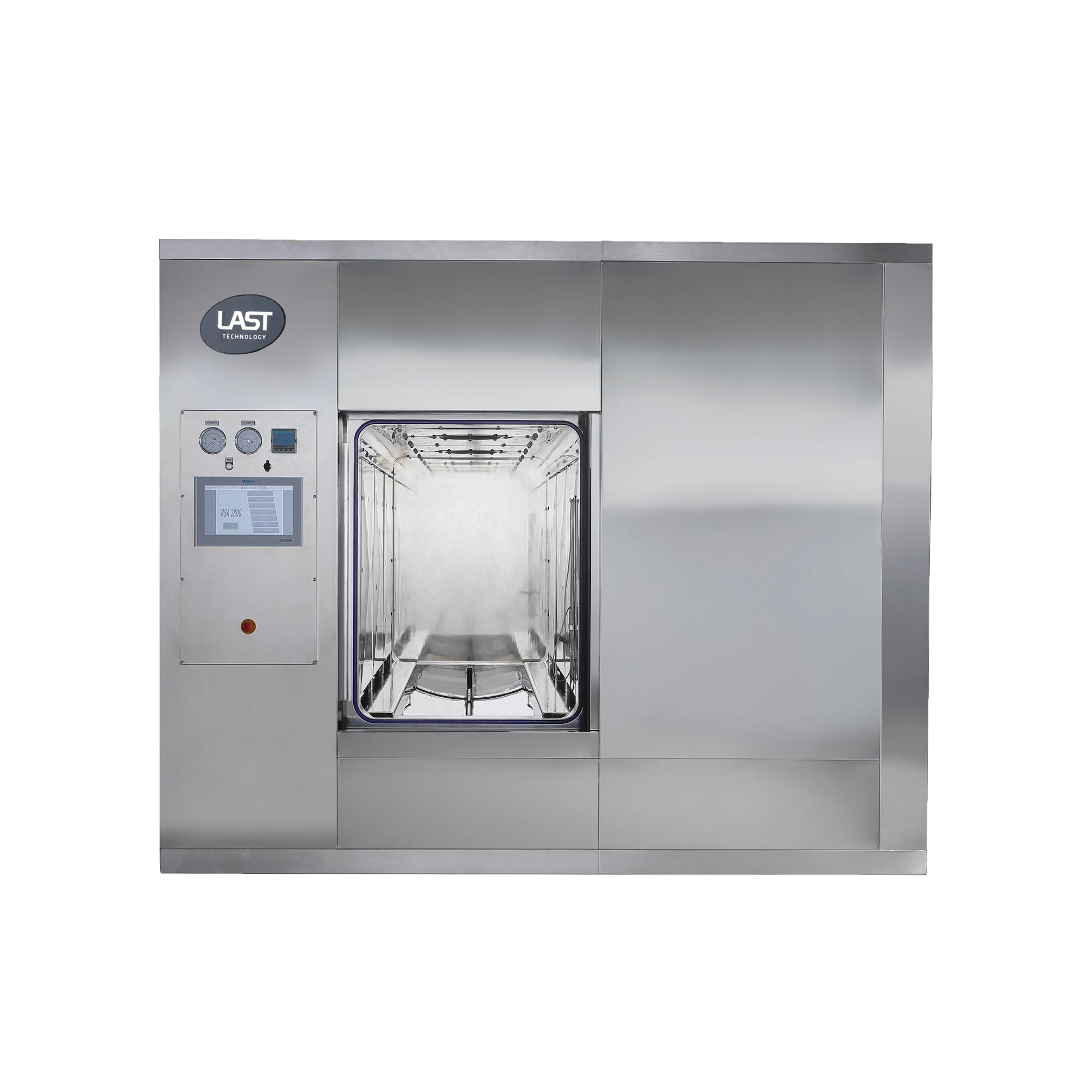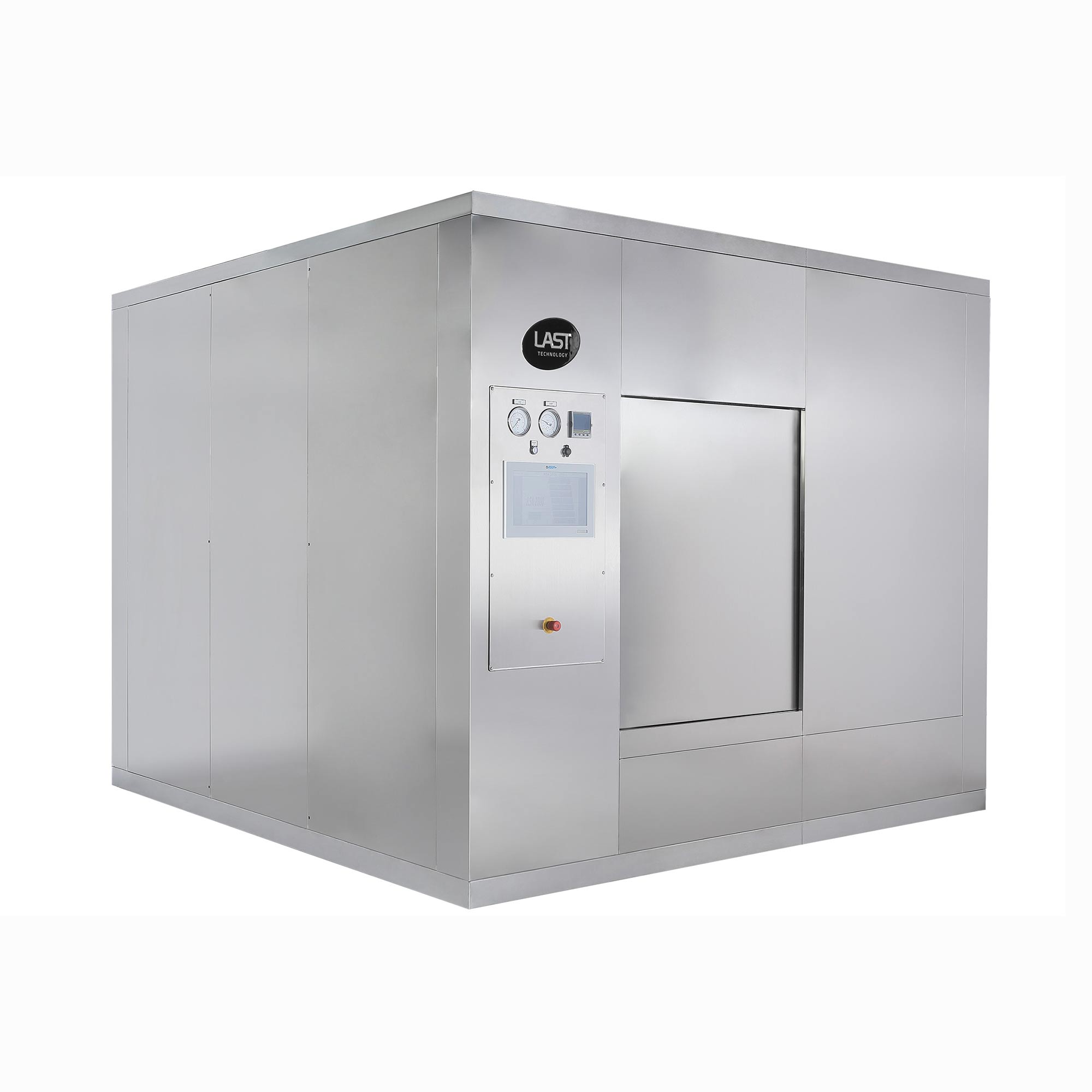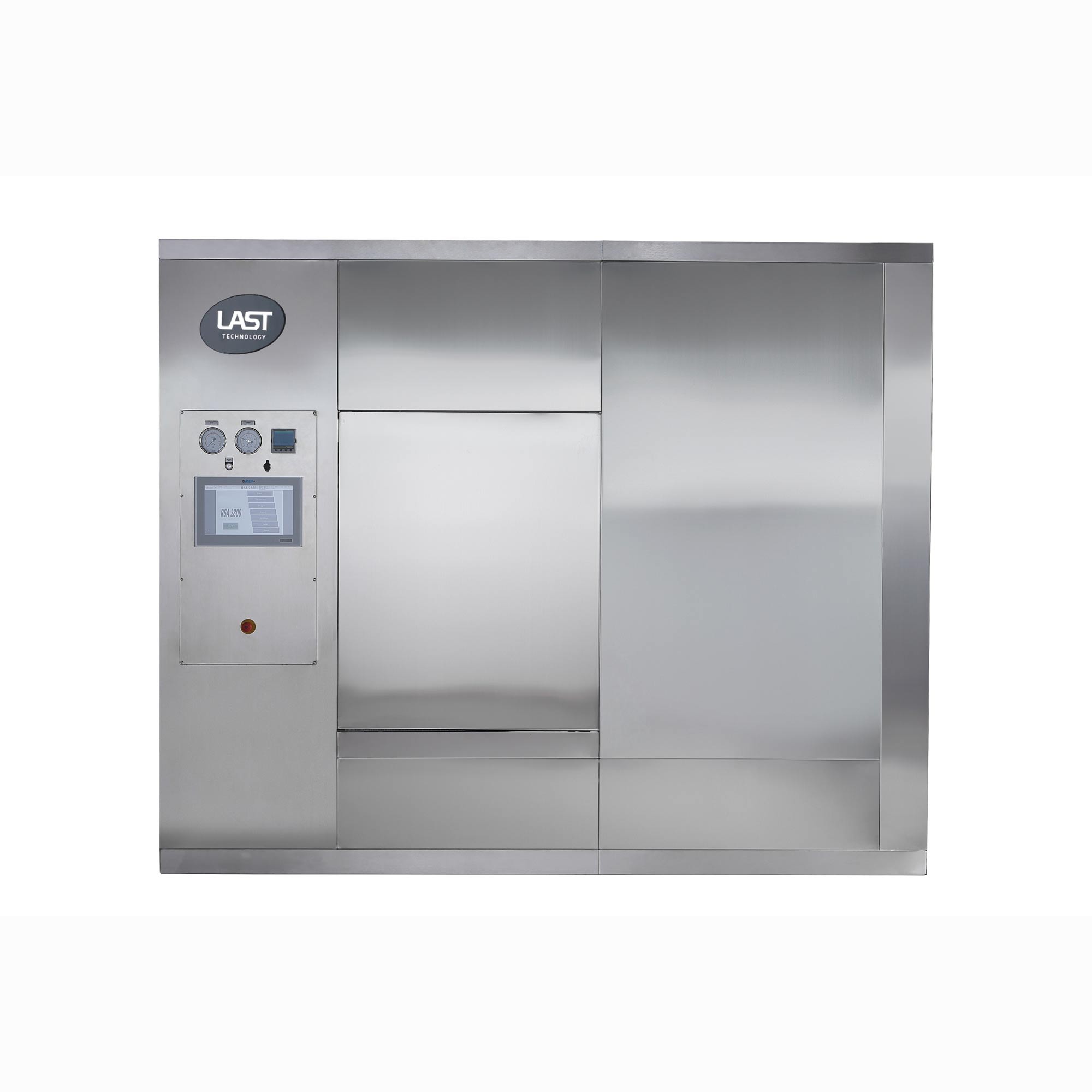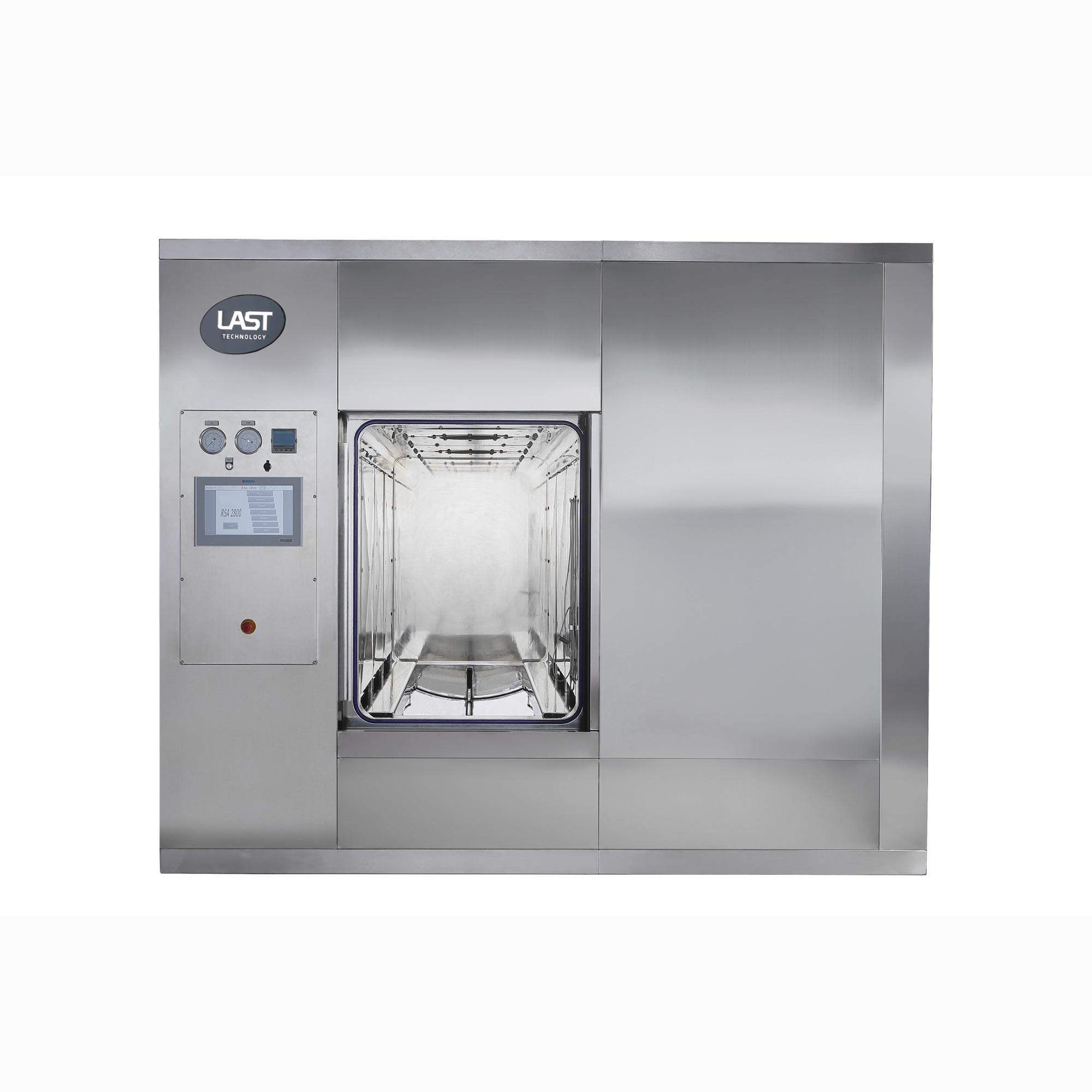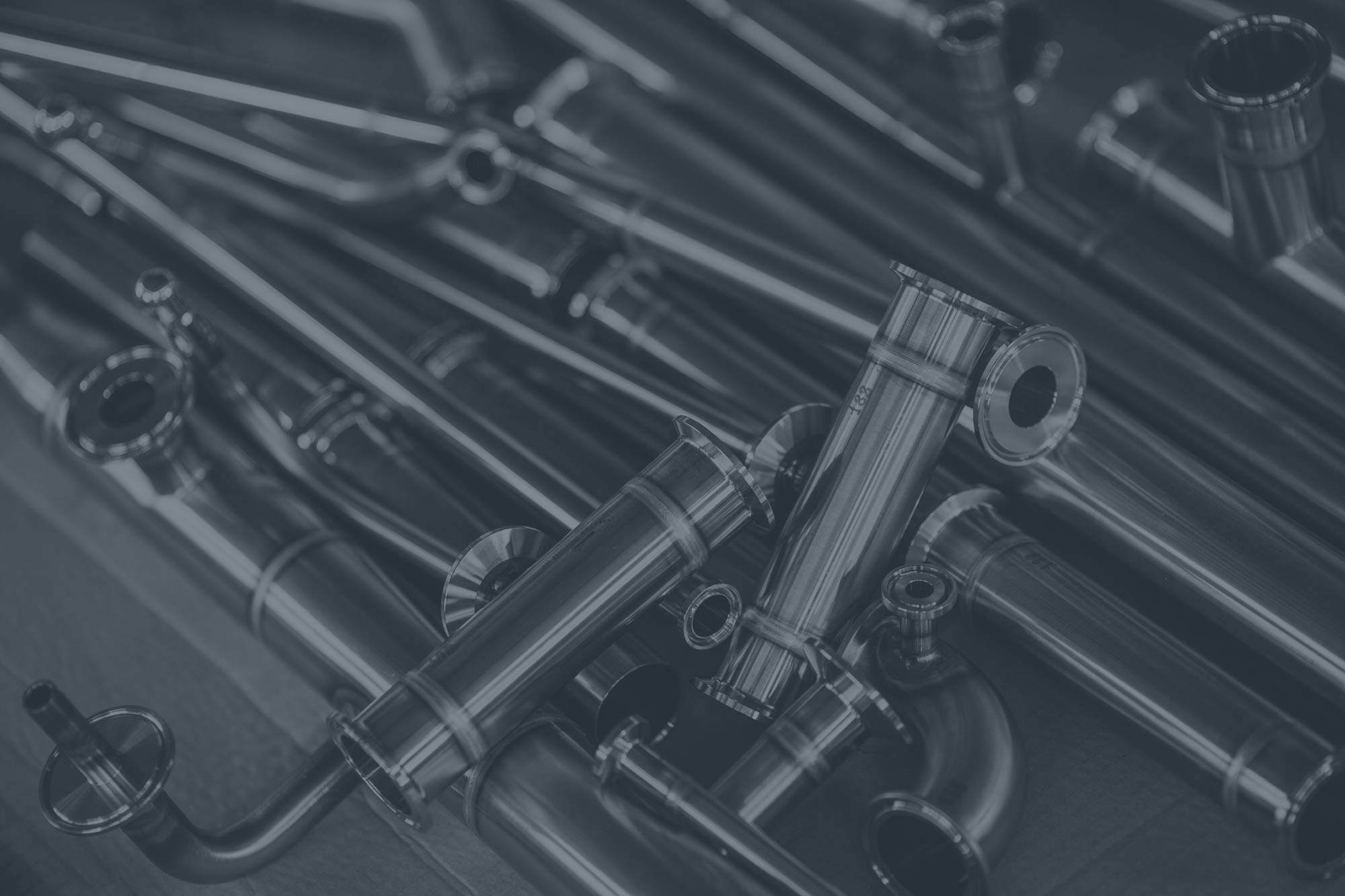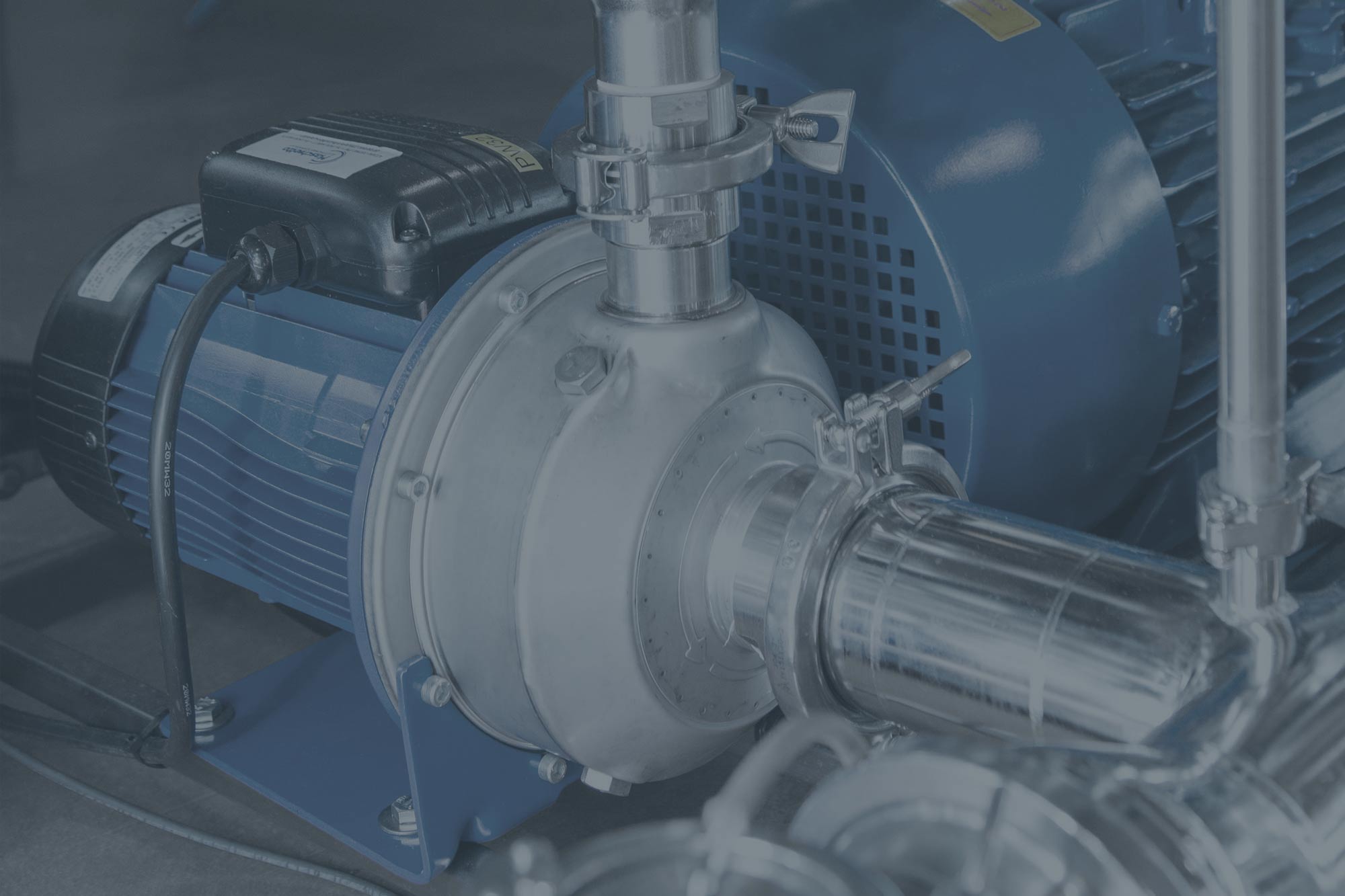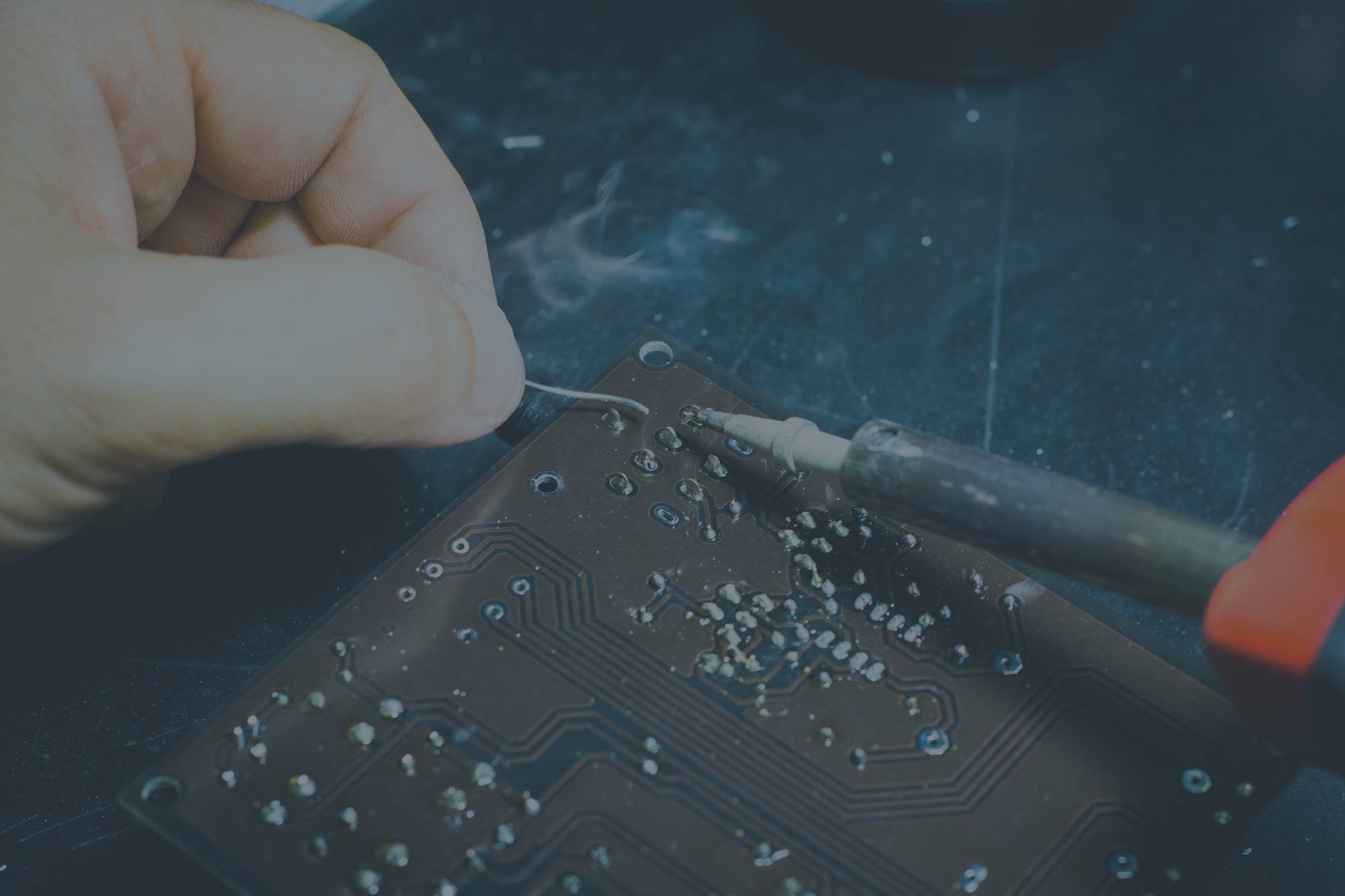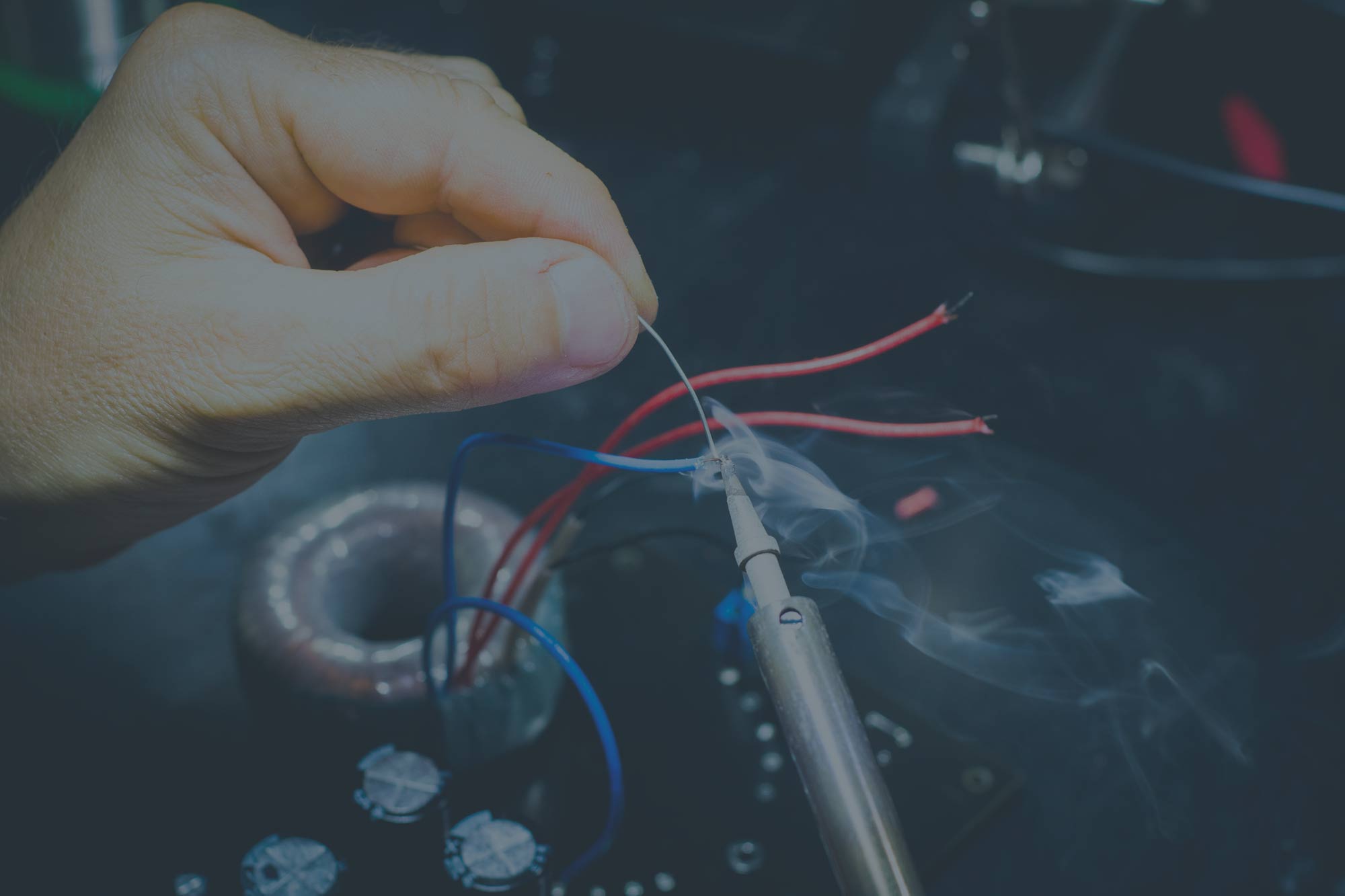
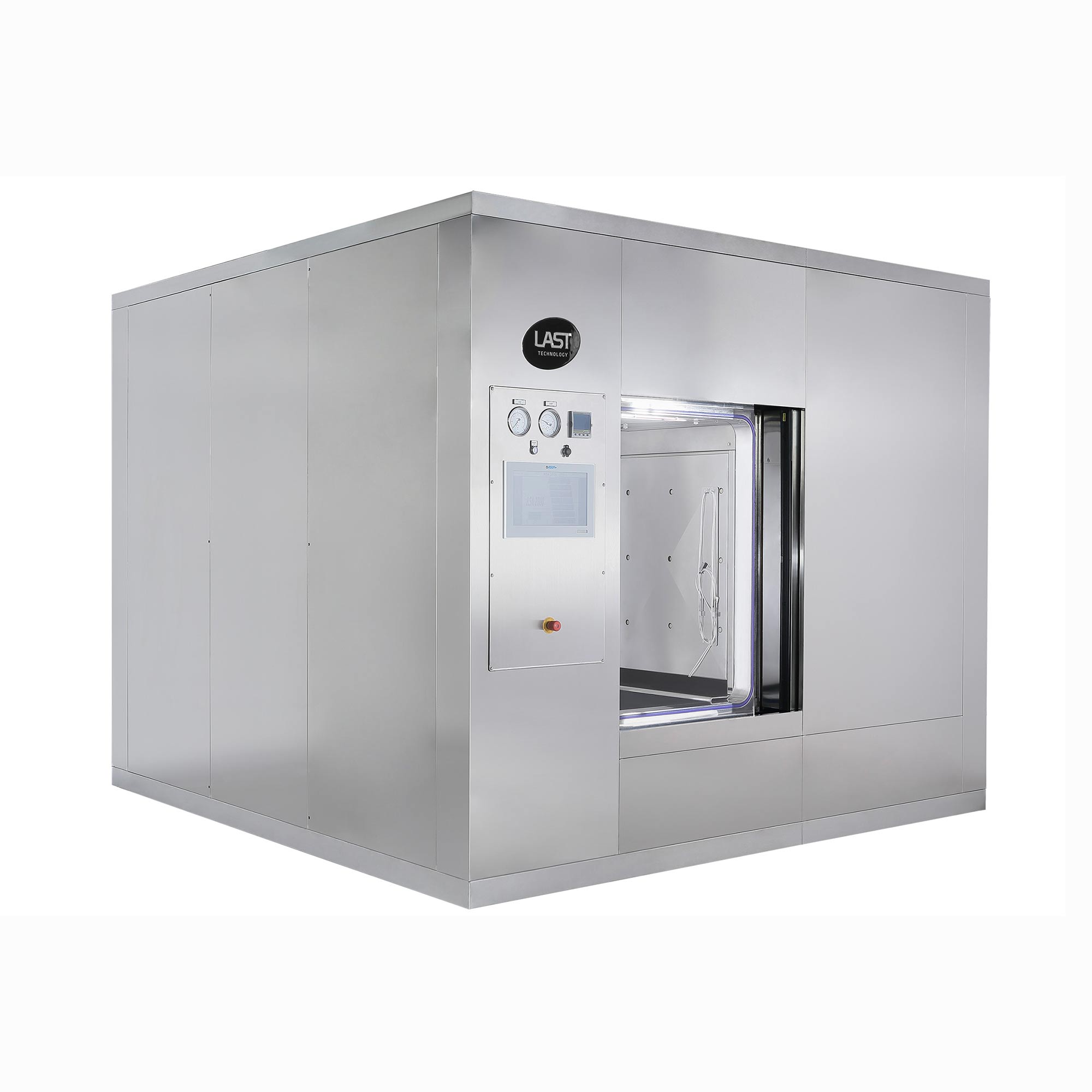
Predefined and “custom” programmes for every need. The equipment process is developed by our Automation Department, according to the current regulations/standards and the type of product being sterilised.
Saturated steam sterilisation (EN 285)
Programme for processing solids or porous materials (clothing and rubber caps, in addition to steel, plastic and rubber machine components, etc.) The programme provides for alternating vacuum and steam pulses (air extraction), the injection of clean saturated steam for sterilisation purposes and finally, a vacuum drying phase. The steam is injected into the sterilisation chamber via a PID-controlled automatic modulating valve and the generated condensate is continuously evacuated through the drain, in order to ensure excellent heat distribution during all the sterilisation phases (temperature deviation below ± 0.4°C).
Terminal sterilisation using a mixture of Air + Steam
An integrated ventilation system that mixes the clean steam and air together, thus creating the sterilisation medium.
This process method is recommended for complex plastic or glass containers, such as pre-filled syringes or vials in which condensate may form and become problematic for the finished product. The system ensures optimum heat distribution throughout the entire sterilisation phase (temperature deviation below ± 1°C). These autoclaves also boast a better drying process, thanks to the ventilation system that prepares the unloaded product for labelling and packaging.
Terminal sterilisation using Superheated Water
A high-flow water recirculation system, thanks to the centrifugal pumps and “double-head multitube” heat exchangers which allow a “water” medium (WFI or PW) to be used as a means of transferring heat to warm up, sterilise and cool down the load. The system ensures optimum heat distribution throughout the entire sterilisation phase (temperature deviation below ± 1°C). This process method provides for faster cycles but the treated product comes out still damp. Nevertheless, it remains the preferred method in most cases, due to its simplicity, cost-effectiveness and ease of validation.
- Circular sterilisation chamber with square or rectangular hatches (doors).
- A flat/circular cavity that completely envelopes the chamber to quickly and uniformly heat/cool the loads.
- Some reinforcements are welded onto the outside of the cavity to ensure stability during operating conditions..
- The chamber is positioned on a base that has been designed specifically to evenly distribute the weight on the floor.
- The loading trolley-inserting and removing guides are positioned on the bottom of the chamber; they are also height-adjustable.
- The bottom of the chamber converges towards the drain sump in order to make disposing of the condensate easier.
- Two 2” tri-clamp ferrules are welded to the chamber for validation purposes (temperature uniformity mapping and pressure tests).
- All of the chambers internal surfaces are mechanically polished and then subjected to chemical degreasing, pickling and passivation treatments. Surface finish: ≤ 0.35 micron.
- Above-floor or recessed chamber installation possible (depending on the size).
cGMP 3-in-1 sterilization
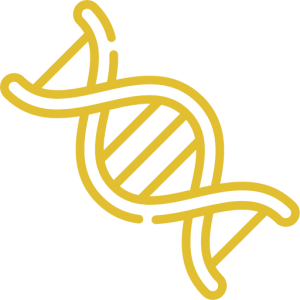 PHARMA DIVISION
PHARMA DIVISION
cGMP 3-in-1 steriliZation description
The PREMIUM RSA Autoclaves are “combined” equipment, i.e. equipped with three types of sterilisation processes (clean saturated steam for solid materials, a mixture of air + steam for liquids in small containers and superheated water for large containers).
![]() POROUS, NON-POROUS AND LIQUIDS
POROUS, NON-POROUS AND LIQUIDS
![]() SATURATED STEAM + MIXED AIR/STEAM + SUPERHEATED WATER
SATURATED STEAM + MIXED AIR/STEAM + SUPERHEATED WATER
![]() 60°C – 134°C
60°C – 134°C

Predefined and “custom” programmes for every need. The equipment process is developed by our Automation Department, according to the current regulations/standards and the type of product being sterilised.
Saturated steam sterilisation (EN 285)
Programme for processing solids or porous materials (clothing and rubber caps, in addition to steel, plastic and rubber machine components, etc.) The programme provides for alternating vacuum and steam pulses (air extraction), the injection of clean saturated steam for sterilisation purposes and finally, a vacuum drying phase. The steam is injected into the sterilisation chamber via a PID-controlled automatic modulating valve and the generated condensate is continuously evacuated through the drain, in order to ensure excellent heat distribution during all the sterilisation phases (temperature deviation below ± 0.4°C).
Terminal sterilisation using a mixture of Air + Steam
An integrated ventilation system that mixes the clean steam and air together, thus creating the sterilisation medium.
This process method is recommended for complex plastic or glass containers, such as pre-filled syringes or vials in which condensate may form and become problematic for the finished product. The system ensures optimum heat distribution throughout the entire sterilisation phase (temperature deviation below ± 1°C). These autoclaves also boast a better drying process, thanks to the ventilation system that prepares the unloaded product for labelling and packaging.
Terminal sterilisation using Superheated Water
A high-flow water recirculation system, thanks to the centrifugal pumps and “double-head multitube” heat exchangers which allow a “water” medium (WFI or PW) to be used as a means of transferring heat to warm up, sterilise and cool down the load. The system ensures optimum heat distribution throughout the entire sterilisation phase (temperature deviation below ± 1°C). This process method provides for faster cycles but the treated product comes out still damp. Nevertheless, it remains the preferred method in most cases, due to its simplicity, cost-effectiveness and ease of validation.
- Circular sterilisation chamber with square or rectangular hatches (doors).
- A flat/circular cavity that completely envelopes the chamber to quickly and uniformly heat/cool the loads.
- Some reinforcements are welded onto the outside of the cavity to ensure stability during operating conditions..
- The chamber is positioned on a base that has been designed specifically to evenly distribute the weight on the floor.
- The loading trolley-inserting and removing guides are positioned on the bottom of the chamber; they are also height-adjustable.
- The bottom of the chamber converges towards the drain sump in order to make disposing of the condensate easier.
- Two 2” tri-clamp ferrules are welded to the chamber for validation purposes (temperature uniformity mapping and pressure tests).
- All of the chambers internal surfaces are mechanically polished and then subjected to chemical degreasing, pickling and passivation treatments. Surface finish: ≤ 0.35 micron.
- Above-floor or recessed chamber installation possible (depending on the size).
cGMP 3-in-1 sterilisation
 PHARMA DIVISION
PHARMA DIVISION
cGMP 3-in-1 sterilisation description
The RSA PREMIUM Autoclaves are “combined” equipment, i.e. equipped with three types of sterilisation processes (clean saturated steam for solid materials, a mixture of air + steam for liquids in small containers and superheated water for large containers).
![]() POROUS, NON-POROUS AND LIQUIDS
POROUS, NON-POROUS AND LIQUIDS
![]() SATURATED STEAM + MIXED AIR/STEAM + SUPERHEATED WATER
SATURATED STEAM + MIXED AIR/STEAM + SUPERHEATED WATER
![]() 60°C – 134°C
60°C – 134°C

cGMP 3-in-1 sterilisation
 PHARMA DIVISION
PHARMA DIVISION
cGMP 3-in-1 sterilisation description
The RSA PREMIUM Autoclaves are “combined” equipment, i.e. equipped with three types of sterilisation processes (clean saturated steam for solid materials, a mixture of air + steam for liquids in small containers and superheated water for large containers).
![]() POROUS, NON-POROUS AND LIQUIDS
POROUS, NON-POROUS AND LIQUIDS
![]() SATURATED STEAM + MIXED AIR/STEAM + SUPERHEATED WATER
SATURATED STEAM + MIXED AIR/STEAM + SUPERHEATED WATER
![]() 60°C – 134°C
60°C – 134°C
Predefined and “custom” programmes for every need. The equipment process is developed by our Automation Department, according to the current regulations/standards and the type of product being sterilised.
Saturated steam sterilisation (EN 285)
Programme for processing solids or porous materials (clothing and rubber caps, in addition to steel, plastic and rubber machine components, etc.) The programme provides for alternating vacuum and steam pulses (air extraction), the injection of clean saturated steam for sterilisation purposes and finally, a vacuum drying phase. The steam is injected into the sterilisation chamber via a PID-controlled automatic modulating valve and the generated condensate is continuously evacuated through the drain, in order to ensure excellent heat distribution during all the sterilisation phases (temperature deviation below ± 0.4°C).
Terminal sterilisation using a mixture of Air + Steam
An integrated ventilation system that mixes the clean steam and air together, thus creating the sterilisation medium.
This process method is recommended for complex plastic or glass containers, such as pre-filled syringes or vials in which condensate may form and become problematic for the finished product. The system ensures optimum heat distribution throughout the entire sterilisation phase (temperature deviation below ± 1°C). These autoclaves also boast a better drying process, thanks to the ventilation system that prepares the unloaded product for labelling and packaging.
Terminal sterilisation using Superheated Water
A high-flow water recirculation system, thanks to the centrifugal pumps and “double-head multitube” heat exchangers which allow a “water” medium (WFI or PW) to be used as a means of transferring heat to warm up, sterilise and cool down the load. The system ensures optimum heat distribution throughout the entire sterilisation phase (temperature deviation below ± 1°C). This process method provides for faster cycles but the treated product comes out still damp. Nevertheless, it remains the preferred method in most cases, due to its simplicity, cost-effectiveness and ease of validation.
- Circular sterilisation chamber with square or rectangular hatches (doors).
- A flat/circular cavity that completely envelopes the chamber to quickly and uniformly heat/cool the loads.
- Some reinforcements are welded onto the outside of the cavity to ensure stability during operating conditions..
- The chamber is positioned on a base that has been designed specifically to evenly distribute the weight on the floor.
- The loading trolley-inserting and removing guides are positioned on the bottom of the chamber; they are also height-adjustable.
- The bottom of the chamber converges towards the drain sump in order to make disposing of the condensate easier.
- Two 2” tri-clamp ferrules are welded to the chamber for validation purposes (temperature uniformity mapping and pressure tests).
- All of the chambers internal surfaces are mechanically polished and then subjected to chemical degreasing, pickling and passivation treatments. Surface finish: ≤ 0.35 micron.
- Above-floor or recessed chamber installation possible (depending on the size).
We may be small, but we can achieve great things.
Thanks to our customisable after-sales service packages, we offer solutions to suit every need. Choose the one that suits you best!
Customisation is quick and easy
Keep up to date with the latest news from the Last Technology worldand let us steer you towards the most suitable service for you!
